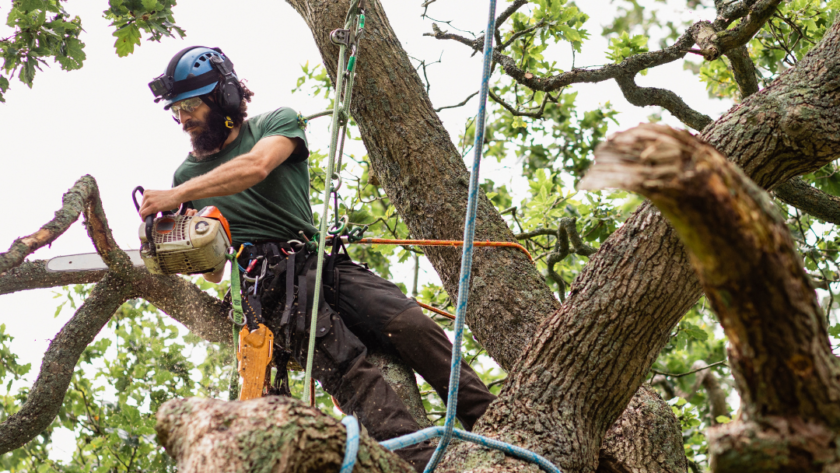The tree service industry holds a vital spot in urban management, particularly in Seattle, where nature mingles with urban living. The importance of maintaining a balance between development and the natural environment is key. In this context, tree removal becomes not just an act of property management but a responsibility towards urban ecology. Such tasks are central to fostering cityscapes that are both safe for residents and respectful of nature. The complexity involved in this blend of safety, aesthetics, and ecological considerations make the subject of tree removal in Seattle a vital topic.
This article explores the practicalities surrounding tree removal Seattle. It’s not just about uprooting a problematic tree; it’s about preparation and informed actions. We will review various aspects of tree health assessment, the subtleties of local regulations, the gravity of safety precautions, the considered decisions around tree replacement, and the responsible disposal of tree debris. We will also clarify the fine details and provide guidance, ensuring that the unavoidable task of tree removal is handled with responsibility and care.
Assess the Tree Health
Evaluating a tree’s health is essential before making the decision to remove it. Inspect for unmistakable indications of distress, such as discolored foliage, infestations, or an abundance of dead branches. The presence of fungi or soft, crumbly wood can signal internal decay, while cracks or splits in the trunk suggest structural instability. Beyond these visual checks, understanding the species-specific vulnerabilities can offer deeper insight into the tree’s condition.
Should difficulties come up in diagnosing the tree’s viability, enlisting the expertise of a certified arborist is advisable. Their seasoned judgment can ascertain whether the tree poses an immediate danger or if there’s potential for recovery, shaping the decision on whether to persist with remediation efforts or to proceed with removal for safety’s sake.
Check for Permits and Regulations
Before the removal of any tree in Seattle, awareness of local ordinances is essential. The city has specific guidelines which may grant certain trees a protected status, complicating their removal. It is important that homeowners or contractors reach out to Seattle’s arborist department to confirm if the tree in question falls under such a designation.
This department can provide the necessary permits if needed, ensuring that all actions align with local regulations. Ignoring these steps can lead to fines or legal complications. It’s not just about bureaucracy; these regulations are in place to uphold the ecological balance and aesthetic integrity of the city.
Consider Safety Precautions
Removing a tree, notably a large or mature one, presents a real risk; so, it requires proper safety measures. The finer points of this task often extend beyond the capabilities of untrained individuals. Professionals are equipped with specialized knowledge and tools that enable them to perform the job with a heightened level of safety. It is important to check that the area around the tree is thoroughly clear of any people, pets, or potential impediments – the goal is to establish a buffer zone that reduces the chance of accidental harm.
Precautions, such as cordoning off the vicinity or notifying neighbors, can serve as additional layers of protection. Professionals not only understand the importance of these safety measures but also have experience in predicting and mitigating the unpredictability of tree felling.
Plan for Tree Replacement
Tree removal requires a forward-thinking approach, especially when considering the ecological and visual impact on your surroundings. Reinstating a balance in nature by planting a replacement tree is a thoughtful strategy that serves both environmental sustainability and aesthetic enhancement. When selecting a suitable species, align your choice with the tree’s future growth and well-being in mind; opt for one that thrives in Seattle’s climatic rhythm and soil richness.
Research what trees best match these criteria, or consult local experts who can provide guidance specific to the needs of your outdoor environment. This proactive measure not only offsets the void left by the removed tree but also contributes to a healthier, greener community space for years to come.
Dispose of Tree Debris Properly
Ensuring proper disposal of tree debris is important after tree removal. Leftover wood and foliage can create hazards or attract pests if not managed appropriately. Recycling options, such as turning the wood into mulch or contributing to compost, present eco-friendly methods of disposal.
For stumps and roots that remain, employing a professional tree removal service is often the safest and most efficient choice. These specialists have the skill and equipment to handle the task, reducing risk to both people and property. Their expertise also contributes to the cleanliness and health of the area, leaving your environment safe and aesthetically pleasing.
The advice detailed in this article aims to empower those in Seattle to steer through the difficulty of tree removal with conscientious planning and precision. Starting with an in-depth assessment of the tree’s health and abiding by city regulations, homeowners can avoid unanticipated legal and financial repercussions. Safety, a central concern, is addressed by engaging professionals and creating a secure perimeter, minimizing potential dangers. Ecological considerations are included in the decision-making process – from choosing a suitable replacement tree to disposing of debris, illustrating a thoughtful commitment to the cityscape’s natural beauty and longevity.



